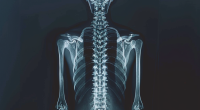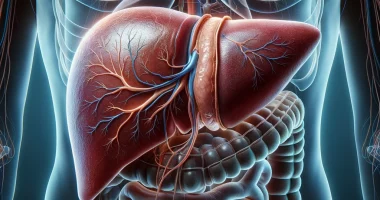Soft tissue sarcoma
What’s that?
Soft tissue tumors are those anatomical structures limited by the skin on one side and bones on the other. Malignant neoplasms of this localization are characterized by a high degree of aggressiveness.
About the disease
Malignant tumors that develop from connective tissue are called sarcomas. The source of this type of neoplasm can be lymphatic or blood vessels, adipose tissue, muscle or tendon structures, or synovial membrane of joints. The share of sarcomas in the overall structure of cancer incidence is no more than 1%. However, despite their rare occurrence, these neoplasms are prone to rapid growth and early metastasis. Therefore, they need to be detected very early, when radical treatment is possible.
Typically, tumors of the subcutaneous, connective, and other soft tissues most often develop on the upper or lower extremities. The patient notices a localized formation, which is usually painless. It is recommended to see a doctor immediately to avoid wasting precious time.
Types
By histological structure, malignant tumors of soft tissues are heterogeneous. The most common types are the following:
- liposarcoma – the source of the neoplasm is mutated cells of adipose tissue (the most common localization is the thigh and knee area, as well as the retroperitoneal space);
- rhabdomyosarcoma – the tumor comes from the progenitor cells of striated muscle tissue;
- fibrosarcoma – a neoplasm developing from connective tissue elements (usually detected in the muscle mass of thethigh, shoulder, or neck region);
- synoviosarcoma – the source is synovial cells of large joints (hip, knee, etc.);
- neurosarcoma is a group of tumors of nervous tissue that can develop from its different elements (nerve fiber sheath, sympathetic nodes, etc.);
- hemangiosarcoma – the source is cells lining blood vessels;
- lymphangiosarcoma is a neoplasm that develops from elements of lymphatic vessels.
Symptoms
In the initial stages, soft tissue tumors are silent. Sometimes, they can lead to compression of nerves and be accompanied by a nonspecific pain syndrome, which is often observed in several neurological diseases (e.g., intervertebral hernia, nerve inflammation). Over time, the malignant process continues to progress, which leads to the appearance of general symptomatology. The patient notices rapid fatigue, difficulty with movement, shortness of breath, and weight loss, which may be of concern. If the neoplasm is located deep in the tissues, then at this stage, it usually becomes accessible for palpation. However, some superficially localized tumors may be palpable almost from the beginning.
The pathologic mass may have different palpatory characteristics:
- elastic or hard to the touch;
- rounded or oval;
- stationary or relatively mobile;
- painless or painful (often, neoplasms for a long time are not accompanied by pain syndrome, except when they are localized in the area of the joints).
A tissue defect may sometimes appear on the skin above the tumor. Such wounds do not heal long and can quickly become infected with festering bacteria.
Reasons
About 1/3 of patients are under 30 years of age.
The actual causes of malignant soft tissue tumors have not been established to date. Previous traumas are believed to play a predisposing role. About half of patients with malignant neoplasms have a history of mechanical injuries in this localization. The tumor develops some time after tissue healing.
In some cases, tumors may result from carrying specific genes that increase the risk of cellular mutations and reduce the activity of the natural antimutagenic system.
From a pathogenetic point of view, two categories of tumors are distinguished:
- Primary malignant, whose cells initially show signs of aggression and atypia;
- Secondary malignant, which develops due to malignization of an initially benign process.
The following factors may increase the risk of transformation of a benign process into a malignant one:
- exposure to certain chemicals that can provoke mutations in cells;
- prolonged exposure of tissues to ultraviolet light;
- exceeding the allowable dose of radiation energy;
- certain genetic diseases (neurofibromatosis, tuberous sclerosis) in which the oncogenic potential of cells is increased.
Diagnosis
Comprehensive diagnostics make establishing a definitive diagnosis in the shortest time possible. Oncologists begin the consultation by detailing the patient’s complaints, objective examination of the suspicious area and its palpation. Screening examinations, such as radiography, ultrasound scanning, general clinical blood tests, and tests for cancer markers follow it.
The final diagnosis is based on the results of histologic examination. A biopsy of the suspected area is performed, and then the tissue structure is studied under a microscope, including antigenic identification methods.
Treatment
Soft tissue tumors are treated comprehensively. Depending on the type of neoplasm, surgical intervention may be supplemented with a radiation or chemotherapy program.
Conservative treatment
Fighting the malignant process requires the most complete removal of the pathological focus. With the help of surgery, it is not always possible to remove all tumor cells, which can sometimes spread beyond the visible boundaries of the tumor. Therefore, depending on the clinical situation at the preoperative or postoperative stage, chemotherapy or radiation may be prescribed. If such therapy is given before surgery, it is called neoadjuvant therapy; if it is given after surgery, it is called adjuvant therapy.
Surgical treatment
Surgical treatment is indispensable, as it allows removing the bulk of malignant cells. During surgery, the pathologic focus and the nearest lymph nodes are usually removed. The main tumor mass is excised with observance of the resection margins, in which, histologically, there should be no malignant cells. The removed material is necessarily sent for morphological analysis, according to the results of which the treatment can be adjusted.
All these treatment options are available in more than 950 hospitals worldwide (https://doctor.global/results/diseases/soft-tissue-sarcoma). For example, soft tissue tumor removal is performed in 23 clinics across Turkey for an approximate price of $3.9 K (https://doctor.global/results/asia/turkey/all-cities/all-specializations/procedures/soft-tissue-tumor-removal).
Prevention
No effective methods of prevention of soft tissue masses have been developed. Given that in half of the cases, there is an indication of the fact of traumatization of the anatomical region where the tumor subsequently developed, it makes sense to avoid traumatism. For patients who have encountered trauma, even after tissue recovery, dynamic observation with an orthopedic traumatologist is recommended. This recommendation especially applies to those people who have metal plates and screws installed for the treatment of fractures.
Rehabilitation
The rehabilitation program, after a surgical intervention, is prepared individually and takes into account the degree of trauma of the operation. If the limb was amputated, the issue of prosthetics is decided. In other cases, joint development with physical therapy methods, massage, and physiotherapy is indicated after surgery that requires immobilization.



